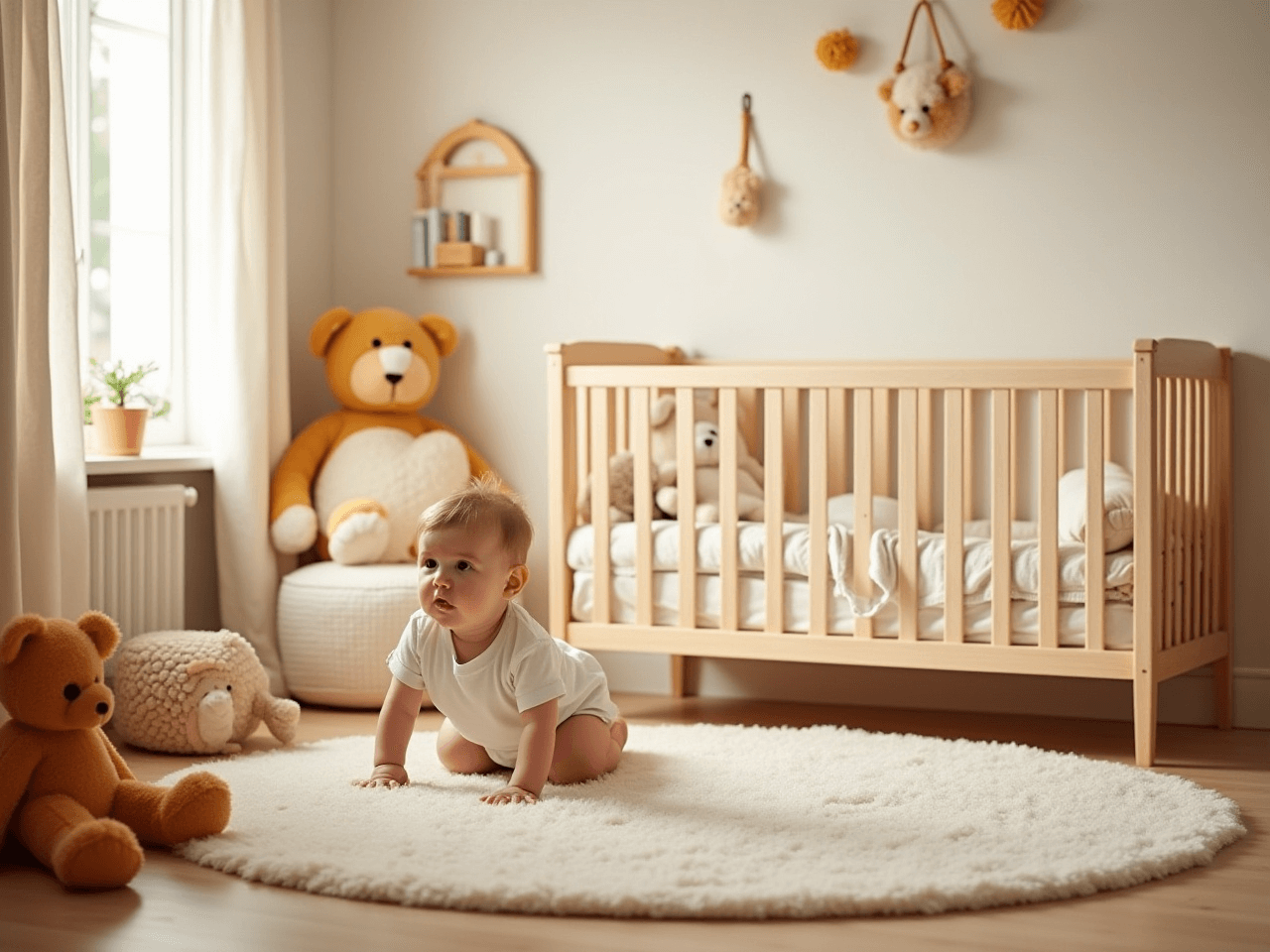Choosing a rug for your nursery shouldn’t just be about aesthetics. While finding a design that complements your décor is important, the real focus should be on creating a safe, comfortable, and practical space for your baby. After all, this is where they’ll spend countless hours crawling, playing, and learning to take their first steps.
This post will guide you through everything you need to know about selecting the perfect nursery rug, from safety and comfort to materials and style. Plus, we’ll outline common pitfalls to avoid and recommend trusted brands to make your decision a whole lot easier.
Key Considerations When Choosing a Nursery Rug
1. Safety First
One of the most vital aspects when choosing a rug is ensuring it’s safe for your baby. Here’s what to keep in mind:
- Non-toxic materials: Only buy rugs made from materials free of harmful chemicals and dyes. Look for rugs with certifications like OEKO-TEX® or Global Organic Textile Standard (GOTS), which guarantee safety.
- Low pile height: Thick, shaggy rugs may look cozy, but they can pose a tripping hazard as your baby learns to walk. A low-pile rug is safer and easier for little hands and knees to crawl on.
2. Comfort for Crawling and Playtime
Since your baby will spend a lot of time on the floor, prioritize softness and cushioning. Look for rugs with a plush texture that’s gentle on their sensitive skin while providing ample support.
3. Durability
Babies can be messy. From spilled milk to diaper leaks and unexpected stains, you’ll need a rug that can withstand regular cleaning and resist wear-and-tear.
4. Easy to Clean
Ease of maintenance is key for busy parents. Consider:
- Washable rugs: Many brands now offer rugs that are machine-washable.
- Spot-clean friendly options: Select materials that can be cleaned quickly with a damp cloth or rug cleaner.
5. Perfect Size & Placement
Determine what areas the rug will cover:
- A large rug under the crib or bed anchors the room and adds warmth.
- A smaller rug near a feeding or play area creates a specific spot for activities.
Measure your nursery carefully to ensure the rug leaves room to move furniture freely.
6. Allergy-Friendly Materials
If your child has sensitive skin or allergies, opt for hypoallergenic rugs made of natural or organic fibers.
Best Rug Materials for a Nursery
When it comes to nursery rugs, not all materials are created equal. Here’s a breakdown of popular options:
Cotton
- Pros: Soft, breathable, lightweight, and easy to clean.
- Cons: Less durable than other materials and may wear out faster in high-traffic areas.
Wool
- Pros: Naturally hypoallergenic, durable, stain-resistant, and temperature-regulating.
- Cons: Higher price point and not always the easiest to clean.
Polypropylene or PET
- Pros: Highly affordable, stain-resistant, and easy to clean. These synthetic options mimic the look of wool at a fraction of the cost.
- Cons: Not as eco-friendly or breathable as natural materials.
Bamboo Silk or Viscose
- Pros: Luxuriously soft with a shiny finish, perfect for high-end nursery designs.
- Cons: Prone to stains and harder to maintain, making it ideal for low-traffic areas.
Rug Styles That Work Well in Nurseries
Whether you’re going for playful or serene, the style of your rug can enhance the overall theme of your nursery.
Playful Patterns
Look for rugs with fun designs such as animals, stars, or alphabets. These rugs double as a decorative and educational feature for your child’s room.
Neutral Tones
Soft, calming shades like beige, gray, or pastel pinks and blues create a soothing environment while allowing other décor elements to shine.
Themed Rugs
Match your rug to a specific nursery theme. For example:
- Jungle safari theme? Try a zebra-printed rug.
- Space explorer theme? Look for rugs with planets and constellations.
Layered Rugs
Combine a large, neutral rug with a smaller, patterned one for added texture, comfort, and visual interest.
Top Features to Look For
When selecting the best rug for your nursery, keep an eye out for these features:
- Non-slip backing: Minimize the risk of slipping by choosing rugs with built-in grips or pairing them with rug pads.
- Certifications for safety: Opt for rugs with OEKO-TEX® or GOTS certifications to ensure they meet high safety and environmental standards.
- Machine-washable rugs or modular tiles: These make cleaning spills and accidents a breeze.
Mistakes to Avoid When Buying a Nursery Rug
Avoid these common pitfalls when shopping for a nursery rug:
- High-pile shaggy rugs: Although they look plush, they’re harder to clean and pose a tripping hazard.
- Skipping rug pads: Rugs without a grip can slide around, increasing safety risks.
- Choosing rugs without safety certifications: Always verify that the rug is free of toxic chemicals and dyes.
- Ignoring cleaning instructions: A rug that’s too high-maintenance could become a hassle in the long run.
Recommended Brands and Rug Types
Not sure where to start? Here are a few trusted brands and options that parents love:
- The Ambiente: Durable and handcrafted with an emphasis on sustainability, blending traditional craftsmanship with contemporary aesthetics.
- Ruggable: Stylish, stain-resistant, and machine-washable.
- Pottery Barn Kids: High-quality natural fiber rugs with playful designs.
- Lorena Canals: Known for their washable rugs, perfect for nurseries.
Creating the Perfect Space for Your Baby
The ideal nursery rug should strike a balance between functionality, safety, and style. A soft, non-toxic, easy-to-clean rug is not just a décor element; it’s a foundation for baby’s playtime and exploration.
When selecting a nursery rug, invest in a high-quality option tailored to your needs, knowing it will support your baby’s comfort and development as they grow.
Still undecided? Explore our handpicked nursery rug recommendations, or ask us your questions in the comments below. Happy rug shopping!
FAQs
Q1. How do I clean a nursery rug?
Spot-clean spills immediately with a damp cloth and mild soap. For machine-washable rugs, follow the manufacturer’s instructions.
Q2. Should I pick a colorful or neutral rug for my baby’s room?
This depends on your nursery’s theme. Bright patterns can add fun, while neutral tones provide a calming atmosphere.
Q3. Is wool safe for babies?
Yes, wool is naturally hypoallergenic and durable, making it a great choice for nurseries.





